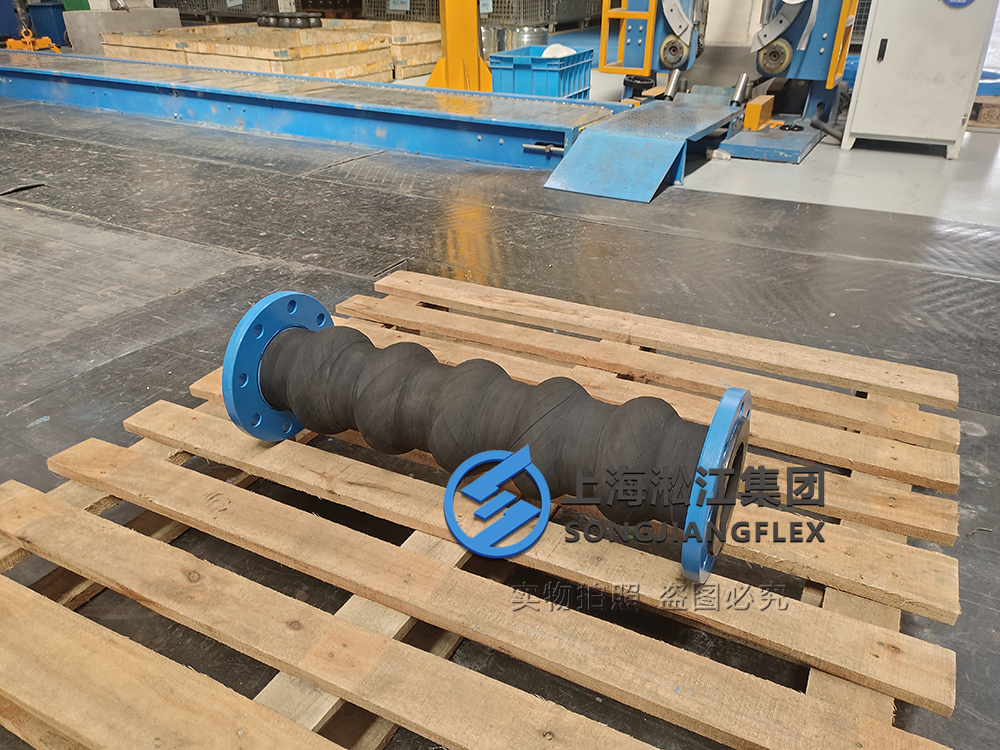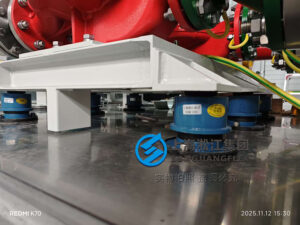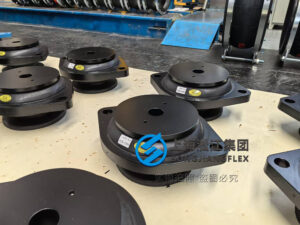Thermal expansion, vibration, and misalignment in pipeline systems often lead to issues, especially in complex or large-scale industrial facilities. Customizing extended rubber expansion joints effectively solves these problems, ensuring system stability and safety.
Custom extended rubber expansion joints are tailored to meet the specific needs of your pipeline, providing better adaptability and solving complex issues that standard joints cannot. Customization ensures precise sizing and performance, helping to reduce system maintenance costs.
So, what are the specific benefits of custom extended rubber expansion joints? Let’s explore their functions and applications in more detail.
What is a Rubber Expansion Joint?
Rubber expansion joints are essential components in pipeline systems, designed to absorb vibrations, thermal expansion, and misalignment. They play a crucial role in maintaining the stability of the system.
Rubber expansion joints help alleviate the pressure caused by thermal expansion and vibrations in pipelines, preventing system failures and extending the life of the piping system.
Rubber expansion joints are typically made of rubber or synthetic rubber materials, capable of withstanding various movements and displacements in pipelines. In applications such as rubber expansion joint for pipe, they not only absorb thermal expansion but also help mitigate vibrations and displacements between pipelines and equipment, preventing damage and increasing system lifespan.
What Are the Benefits of Custom Extended Rubber Expansion Joints?
Custom extended rubber expansion joints are designed to cover a larger range of pipe displacement, making them ideal for more complex installation environments and improving the reliability and stability of the system.
With an extended design, rubber expansion joints can reduce the stress caused by pipe displacement and operate effectively in more complicated environments, increasing the safety of the system.
The main advantage of custom extended rubber expansion joints is their ability to reduce the impact of thermal expansion and vibrations on the system. Especially in large facilities, custom joints can effectively mitigate system failures caused by temperature or pressure changes, reducing maintenance costs. They are commonly used in flexible hose packless expansion joints, and even in high-pressure systems, they provide stable performance.
How to Choose the Right Custom Extended Rubber Expansion Joint?
Choosing the right custom extended rubber expansion joint involves considering various factors, including pipe size, working temperature, pressure, and vibration requirements.
By customizing the rubber expansion joint to meet the specific needs of the pipeline, you ensure that its performance meets expectations, extending equipment lifespan and reducing maintenance costs.
First, selecting the right material is crucial, especially for environments that are high-temperature or corrosive. A customized design ensures that the joint meets specific needs, especially in extreme pressure or temperature environments. For rubber expansion joint installation, ensuring the correct installation and usage can prevent mistakes during setup, ensuring smooth system operation.
Common Applications of Custom Extended Rubber Expansion Joints
Custom extended rubber expansion joints are commonly used in water treatment, oil, and gas industries, particularly in high-pressure pipeline systems where they solve issues that standard joints cannot address.
In extreme working conditions, custom extended rubber expansion joints effectively prevent pipe damage and address risks caused by thermal expansion or vibrations.
These joints are widely used in pipeline systems for water pumps, fans, and generators, especially in environments that require vibration reduction and pressure resistance. For example, in the oil and gas industry’s high-pressure pipeline systems, custom expansion joints ensure the stability of the pipelines. They can also be used in rubber union connector expansion joints, providing more secure connections and effectively reducing vibrations.
Installation and Maintenance of Custom Extended Rubber Expansion Joints
To ensure the long-term stability of custom extended rubber expansion joints, proper installation and regular maintenance are essential to avoid joint failure and extend their service life.
Through proper installation and regular inspections, you can effectively prevent wear, leakage, and other issues, ensuring the continuous operation of your pipeline system.
During installation, ensure the joint’s sealing and tightness to prevent leaks or joint damage due to improper installation. Regular inspection and maintenance can extend the lifespan of the joint and reduce downtime and maintenance costs. When it comes to rubber expansion joint installation, each step should strictly follow the standard procedures to ensure flawless execution.
What is the Purpose of a Rubber Expansion Joint?
Rubber expansion joints are used to absorb and alleviate the pressure caused by thermal expansion, vibrations, and misalignments in pipelines, preventing damage to the system and ensuring stability.
Rubber expansion joints help reduce pressure caused by thermal expansion and vibrations in pipelines, protecting both the pipe and equipment, ultimately extending the system’s life.
Their primary purpose is to maintain the stability of the pipeline under temperature changes and pressure fluctuations, preventing pipeline failure and system downtime. Especially in high-temperature and high-pressure environments, rubber expansion joints play a crucial protective role.
What is the Purpose of an Expansion Joint?
Expansion joints are typically used to accommodate the expansion and contraction of pipelines caused by temperature changes, ensuring the safe operation of the pipeline system.
Expansion joints play a critical role in managing thermal stresses, preventing damage to the pipeline by allowing controlled movement and maintaining system integrity.
Expansion joints are designed to address the stresses created by temperature fluctuations or pressure variations in the pipeline. They reduce the risk of pipeline failure and system breakdowns, ensuring the long-term durability of the system.
What is an Elastomeric Expansion Joint?
Elastomeric expansion joints use elastic materials to absorb and mitigate the thermal expansion and vibrations of pipelines, preventing pipe damage.
Elastomeric expansion joints absorb pipe movement caused by thermal changes or vibration, reducing unnecessary stress on the system and maintaining pipeline stability.
Common types of elastomeric expansion joints include rubber expansion joints and synthetic rubber expansion joints. They are widely used in applications where vibration reduction and thermal expansion management are essential.
What Are the Three Types of Expansion Joints?
Expansion joints come in three common types, each designed to suit different pipeline system requirements and operating environments.
The three common types of expansion joints are axial expansion joints, lateral expansion joints, and angular expansion joints. Choosing the right type improves system stability.
Understanding the characteristics of each expansion joint type helps make a more informed decision when designing pipeline systems, ensuring both stability and safety. The selection of the appropriate type depends on the system’s specific needs and operating conditions.
Summary
Custom extended rubber expansion joints enhance pipeline system stability and safety, reduce maintenance costs, and provide a longer service life, making them a vital component in industrial pipeline systems.







